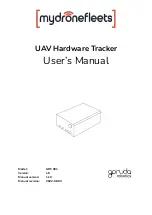
6
MMCs, if you don't have a computer.) Our MapCreate mapping software
can save, edit or create its own GPS Data Files, which can be copied to
the MMC and then loaded from the MMC into iFINDER's memory.
(
NOTE:
No matter where they come from, GPS Data Files
must
be
loaded from the MMC into memory before iFINDER can use them.)
The other key GPS use for MMCs is storage of special high-detail, cus-
tom maps, which you can produce on your computer with our MapCre-
ate software. These MapCreate custom maps contain much greater de-
tail than the basic background map. These
Custom Map Files
(file
format *.lcm) can also be shared between iFINDERs, other Lowrance
GPS or sonar/GPS units and personal computers.
You make your own Custom Map Files with our MapCreate software,
but you don't have to. We also sell ready-to-use FreedomMaps
. These
custom maps are pre-loaded on MMCs. (No computer work required!).
iFINDER automatically reads Custom Map Files directly from the MMC
or SD Card. To use a custom map, all you need to do is slide an MMC
containing a map into the unit.
Introduction to GPS and WAAS
Well, now you know the basics of how iFINDER does its work. You
might be ready to jump ahead to Section 2,
Installation & Accessories,
on page 11, so you can install the batteries. Or you might want to see
how our text formatting makes the manual tutorials easy to skim. If
that's the case, move on to "How to Use This Manual" on page 8. But, if
you want to understand the current state of satellite navigation, look
over this segment describing how GPS and its new companion WAAS
work together to get you where you're going.
The Global Positioning System (GPS) was launched July 17, 1995 by
the United States Department of Defense. It was designed as a 24-
hour-a-day, 365-days-a-year, all weather global navigation system for
the armed forces of the U.S. and its allies. Civilian use was also avail-
able at first, but it was less accurate because the military scrambled
the signal somewhat, using a process called Selective Availability (SA).
GPS proved so useful for civilian navigation that the federal govern-
ment discontinued SA on May 2, 2000, after the military developed
other methods to deny GPS service to enemy forces. Reliable accuracy
for civilian users jumped from 100 meters (330 feet) under SA to the
present level of 10 to 20 meters (about 30 to 60 feet.)
Twenty-four satellites orbit 10,900 nautical miles above the Earth,
passing overhead twice daily. A series of ground stations (with precisely
surveyed locations) controls the satellites and monitors their exact loca-
tions in the sky. Each satellite broadcasts a low-power signal that identi-
Summary of Contents for Handheld Mapping GPS Receiver
Page 1: ...Pub 988 0148 481 www lowrance com Handheld Mapping GPS Receiver Operation Instructions ...
Page 8: ...vi Notes ...
Page 18: ...10 Notes ...
Page 128: ...120 Notes ...
Page 132: ...124 Notes ...
Page 133: ...125 Notes ...
Page 134: ...126 Notes ...














































